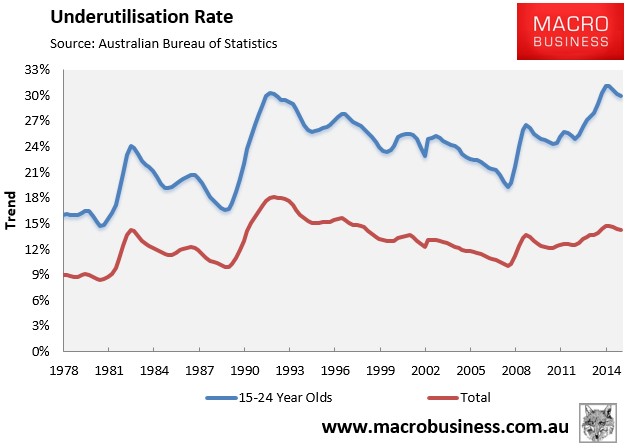Greg Jericho has penned a thoughtful piece over at The Drum assessing the Coalition’s $840 million Youth Jobs Path program, announced in last week’s Budget.
While Jericho does not oppose the program, he does argue that there are some important kinks that need to be worked out to ensure that it does not become a substitute for ordinary youth workers:
…policing that and ensuring employers don’t rort the scheme are key. And as legal advice from the ACTU suggests, saying the internship is not really work and thus doesn’t require interns being paid at minimum wage looks like it would struggle to clear a few legal hurdles.
Employers are the ones who stand to ultimately benefit from the scheme as the Government is the one paying the intern, the employer gets $1000 up front for taking on the intern, plus can forget about sick days, annual leave and penalty rates.
That’s a heck of an incentive to not hire a junior worker – even a casual one – and instead get an intern.
Given the need for the Government to address aspects such as worker compensation, it would seem there are still a few kinks in the program to iron out…
That’s not to say a focus on youth unemployment is ignoble, but such a scheme, whether it’s Work for the Dole or the internship program, is mostly doomed if the overall employment and economic situation is not improving.
Youth unemployment is essentially just a function of the broader economy…
One of the most important reasons for paying attention to youth unemployment, however, is that it is very good at being the canary in the employment mine.
More often than not younger workers are the first to be retrenched when an employer needs to cut staff…
When the youth employment canary starts to look ill, focusing only on keeping it alive can distract from the underlying problem of a slowing economy, especially if your solutions are a cycle of internships with very little in the way of ongoing actual employment.
Jericho makes a lot of good points. While the Youth Jobs Path program might help at the margins, it won’t do much to increase the overall supply of youth jobs and could also lead to employers substituting a regular employee for an intern, saving themselves money in the process.
Ultimately, the youth labour market tracks overall employment, and while there has been some improvement over the past year or so, labour underutilisation is still tracking at 30%:

With youth jobs growth fading (see next chart), and Australia still to face the triple employment shock of falling mining investment, falling dwelling investment, and the closure of the car industry, the youth employment outlook is poor.

When viewed in this light, the Youth Jobs Path program is really just tinkering at the edges of the youth employment dilemma.

